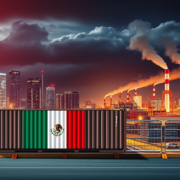💰 Building a Future-Proof Portfolio in Times of Economic Change 📊
In an era where governments print money and the economy stays uncertain, building a strong investment mix is vital. Modern nations like Japan, the United States, and Europe print vast amounts of money while market shifts bring new risks and rewards. This article shows key ideas for sorting the changes and building a portfolio that can stand up to future shifts.
The New Economic Landscape: Uncharted Territory
Central banks print money on a scale unseen before. This effort aims to boost growth and keep recessions at bay. History shows that too much money can spike prices and stir unrest. In past cases, Latin American countries and early Greek cities saw high inflation and political problems that weakened their systems. Today, we face similar risks, yet no one can tell if we will see long stagnation like Japan or a storm of disruptions.
Lessons from Japan: Managing Excess Liquidity
Japan stands as a firm example for investors and experts. Even with a large rise in money supply and very low interest rates, Japan has dodged severe collapse. Its path shows that while extra money can bring risk, a careful plan can cut short quick damage. Still, printing money can seem an easy fix for cutting debt costs by using money that earns no interest. This move may ease issues a bit but brings long-term risks such as high prices, lost trust, and political strain.
Investing Amidst Market Volatility
Investors face cycles of rises and falls in the market. The aim is not to call the waves but to shape a portfolio able to handle both high times and low ones. Wise advice tells us to stick with the plan in both bright and dark economic hours. Passive choices like index funds now play a large role in the market. These funds hold strong voting power in companies, yet too much control in few hands can lead to problems for market flow and the interests of many investors.
Embracing Technological and Economic Shifts
Automation and new tech move industries and work worldwide. As machines and smart programs boost work, some old jobs will fade away. This change may unsettle communities and shake up the market. Investors must watch for firms that mix tech well and can handle changes in work and value.
Cash or Stocks? The Dilemma of Waiting
A common worry for investors is if holding cash is better than staying in the market. Past trends and skilled investors show that saving cash to time the market rarely wins. Steady investment in good assets, even when things are unclear, works better over time. It is still smart to keep some cash or easy-to-sell funds for quick buys when prices drop. The hard part is to spot those moments as market prices come from deep rules and hidden forces beyond simple tags.
The Importance of Discipline and Patience
Chasing every market swing or using endless money printing may seem right at the moment. Still, history shows that sticking to a plan, patient use of funds, and knowing basic money ideas build the strongest portfolios.
Investors should focus on:
-
Quality over quantity: Pick firms that show strong market hold, wise management, and steady cash gain.
-
Long-term perspective: Accept that the market will rise and fall and learn to hold fast in downturns.
-
Diversification: Spread funds across sectors, regions, and asset types to lower risk.
-
Awareness of macro risks: Keep up with money moves, price rises, and global events that can shift markets.
Conclusion
Making a future-ready portfolio in changing times means facing a scene of bold money moves, tech shifts, and evolving market control. Risks come in many forms—from too much money printing to heavy use of passive investment—but the best path is to keep a steady plan built on solid basics and careful waiting.
By seeing the full money picture and holding firm, investors can set themselves up not only to cope but to do well in an ever-changing financial world.






